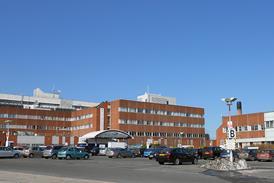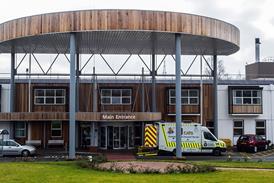Nicola Mortali on the need of a shared vision, close communication, clear delineation of roles with shared risk to deal with the challenges ahead
Sponsored by
Serco, like many organisations, has supported NHS trust customers during the pandemic. We believe the most effective responses have been where a true collaborative partnership has been forged, based on a common ambition to combat the crisis and keep services functioning. We have hardly had a chance to reflect and reset before the current wave was upon us and with healthcare systems becoming increasingly complex and under constant, mounting pressure; what does that mean for staff, resources and infrastructure?
We see challenges around three key areas, one is patient and staff safety and how we continue to segregate effectively between covid and non-covid patients, the second is system capacity and how we can flex that to be able to support changing clinical needs, and the third is how we optimise the system through that capacity.
Retaining that alignment of clinical and non-clinical services will be fundamental in dealing with the ongoing pandemic and the increasing backlog of care needs
The pandemic has put a spotlight on “the hidden army” of key workers without whom our hospitals could not function. They include all the facilities management teams, the cleaners, the porters, the catering staff, the engineers, security guards and all their colleagues. Everyone had a very clear, shared purpose and delivered above and beyond expectation.
This alignment, through improved communication flows and the flattening of organisational levels, across clinical and non-clinical teams enabled services to be delivered quickly and effectively. Through the pandemic we have further evidence of the value they contribute and the power of working closely together to enable improved patient outcomes and flow. Retaining that alignment of clinical and non-clinical services will be fundamental in dealing with the ongoing pandemic and the increasing backlog of care needs.
As we reflect and then look forward, resilience will be key, resilience of our people and the infrastructure, demonstrating agility to flex and adapt. Building people resilience into solutions will be essential, from the empowerment of staff, to a greater focus on wellbeing, and speed of resourcing and training agency labour. The reconfiguration of hospital sites, including rapid opening, re-purposing or closing of spaces, and the ability to implement significant projects, such as new VIE plants, additional physical ED or ITU, seen through the first phase, will be crucial to managing and maintaining infrastructure resilience in a cost-effective way.
Looking to the future, with the benefit of knowing more about covid and time to plan for the next two years, drawing on data and analytics to support decision-making will be critical. The need for accurate data, the use of technology, such as IoT, to drive the efficient and effective use of resources and re-shaped services to maximise the capacity and infrastructure of a hospital estate to enable flow, will be fundamental over the coming months, if not years. Together we must ensure that we create relationships (and contracts) that enable parties to respond quickly to changing demands. A shared vision, close communication, clear delineation of roles with shared risk to deal with the challenges ahead.































